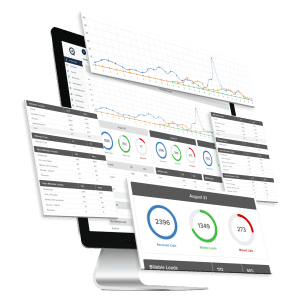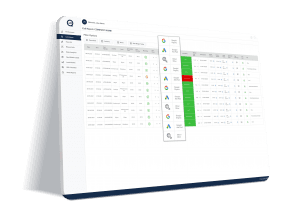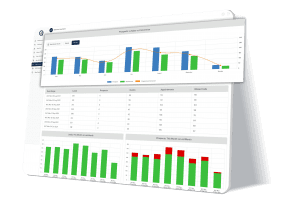Let’s take a closer look at some of the main features and benefits of Call360.

This UI presents us with the data we need at a glance. We can see immediately the reason for the call, listed under ‘Lead Status’.

These different categories can also be viewed in another report (see below) which breaks down all your calls by type, so you can see how much of your call time is spent engaged in each type of task, along with any calls your team may have missed.

Let’s return to the main UI. We can see that the main UI also provides a clear indication of where leads are coming from.
The ‘Medium’ and ‘Source’ columns indicate where the caller has located your phone number – on all these calls, the caller has clicked through from the company website on their mobile phone.
As the ‘Customer Type’ column tells us, all these calls came from new prospects, so the fact that the Medium was the website in all these instances isn’t surprising.
The ‘Source’ column would enable us to see if the call had come from a separately tracked number, had the calls not all been generated by visits to the website. Separately tracked numbers can be used to differentiate between different ad campaigns targeting different geographical locations, or across different targeted segments.
The ‘Recording’ column provides us with download access to a complete transcript of each call, for training and/or keyword analysis purposes.
We can also integrate Google Analytics reporting into the Call360 platform. This allows us to create incredibly detailed attribution models, and gain a comprehensive view of the entire customer journey. Alternatively, the date and time information can be integrated into other reports, such as Google Data Studio or Google Analytics, which can provide quick access to the call tracking data within existing analytics reporting models.
The inclusion of the caller’s number also offers the opportunity for integration with your customer relationship management (CRM) systems. Understanding the needs of your customers (their pain points, their preferred channels, when and why they’ll pick up the phone) means you can automate processes based on their needs.
For example, some customers may take longer to make a purchase, preferring to consider their options for several weeks after their initial call. These customers can be identified, and segmented for follow-up emails to enable their buying process with any additional information they might need. Call360 data can be integrated with your CRM to drive these automated processes.
This personalised, customer-centred approach is increasingly a critical factor for success in both B2B and B2C marketplaces.
Additionally, the quality of the data available from call tracking is higher than online analytics data. Integrating the two data sources will serve to improve and corroborate your data from GA and similar tools.
If you’re interested in finding out how Call360 features can improve the depth and quality of your analytics and attribution, get in touch. We offer a free 14-day trial, so you can experience our solutions in action.


